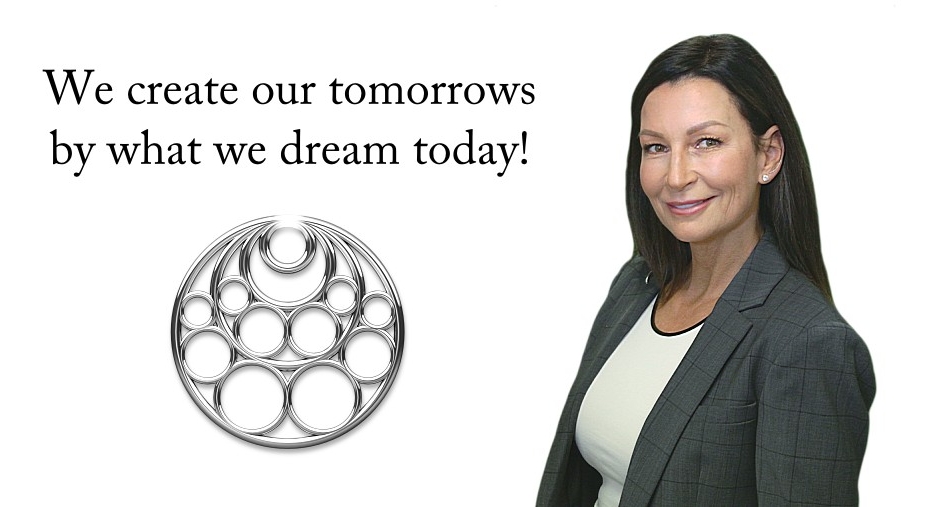

10 (+1) Terms You Need to Know to Figure Out Crypto
Cryptocurrency. NFTs. Mining. Wallets.
Confused by the new buzzwords?
Have a lot of questions but can’t keep it all straight? Are NFTs an investment or a scam? How does it all work?
If you’ve been confused about the digital frontier, here’s a primer of 10 important terms.
Plus 1! BONUS: Web3: The term for the new, crypto and blockchain era of the internet.
Web1 was the first era of the internet—an era of sharing information online. Web2’s the next generation—where most of us are right now. Web2 has more interaction than Web1. Social media sites dominate the world, making a profit on user-generated content.
Web3 builds on our desire for connection but tries to remove third party companies. Nothing’s hosted and monitored by major companies like Meta/Facebook. Nobody sells your data, and creators and their audience live in the same cyberspace.
But how does this all work….
1. Blockchain
The technology that allows everything else is called the ‘blockchain’. The chain is a database of digital information, a series of code that connects blocks – more coding, of course – of information that cannot be altered or updated once they’re set.
A more formal term for blockchain is “Distributed Ledger Technology” – coding (technology) that contains information about digital transactions (ledgers) and cannot be altered because the blocks are kept in multiple locations (distributed).
If someone tries to alter or update a block, under normal circumstances, it won’t matter. When someone needs to verify a block’s information – maybe they need to prove they own an NFT or want to sell their Bitcoin – every copy of the block is checked to make sure it’s valid.
Every copy of the block? What does that mean?
Unlike Facebook’s servers, for example, the blockchain exists in multiple places (distributed, remember?). Transactions require that the majority of the same block says the same thing. Much more secure than keeping all the information in one place – provided no one user owns 51% of the copies of the blockchain!
2. Block
The little links on the blockchain that hold all the important information. Imagine each block like a line on a ledger: marking who sold what to whom when, etc.
When a block has been added, what’s done is done. Blocks cannot be altered.
And since real names aren’t used…you can take steps to protect your digital assets, but there isn’t much you can do in Web3 to get anything like a refund if you change your mind about a transaction.
You may have heard about the anonymity and “Wild West” nature of the Web3 space. All those internet safety tips about not clicking on suspicious links or giving your password to anyone is extra important here.
3. Mining and Staking
Making and verifying the blocks is a process called either ‘mining’ or ‘staking.’
In crypto mining, any time a transaction occurs, the blockchain network is notified. The miners—each with their own computer serving as a node hosting the entire blockchain—validate the information when their computer solves a complicated problem as quickly as possible.
But the computer power needed for this process is energy expensive. As in, the power-to-run-a-country expensive. So instead of mining, where miners are rewarded for having the most powerful, fastest computer, people want to use staking.
With staking, individuals freeze a certain amount of their cryptocurrency for the right to make blocks and verify transactions. They’re paid from interest in the staked currency. They can use a lot less energy because the computers don’t need to rush to review everything.
But the fluctuating value of cryptocurrency means the stakeholders might not get a great price…
4. Wallet
Much like a physical wallet, a digital wallet is where you keep your digital currency and items in Web3. Every wallet has a code – that’s how you identify ‘who’ you are and where to send (or receive) your assets.
If you’ve used a wallet, this term isn’t too hard to understand. But they can be a little more complicated to use safely.
5. Hot & Cold
One security consideration for a wallet is whether it’s ‘hot’ or ‘cold.’
A hot wallet means it’s connected to the internet. Hot is associated with being physically warm, having power, and being turned on. A hot wallet is able to be accessed digitally for transactions.
A cold wallet, on the other hand, is a physical storage device that is kept offline. You can put the storage device (hopefully safely) in a drawer somewhere, and you won’t be able to move the currency or items on that wallet without plugging it in.
It can be a good idea for safety reasons to keep most of your blockchain assets in your cold wallet, and only move currency and items you need to use immediately into your hot wallet. Again, imagine a real wallet: it’s useful to keep a few bucks on you, but you wouldn’t want all your savings in cash when you go out.
6. Cryptocurrency
Currency that exists on the blockchain.
This is where things get speculative.
Because there is no oversight, no central authority, all the blocks are priced by supply and demand. Like stocks, they can rise, fall, never recover, or remain strong.
Not all cryptocurrencies are created equal. Some like Bitcoin or Ether are much more widely accepted standards, and some physical stores will accept them as payment. But others are riskier.
It’s advisable if you want to invest in cryptocurrency to only put in money, you’re willing to lose.
7. DeFi (“Decentralized Finance”)
The financial system made possible by blockchain with cryptocurrency.
As with all Web3, the key is decentralization. No one person, company, or government is in control of the information and interaction.
Once you have a wallet and some cryptocurrency, you can buy, sell, and trade however you and another party agree. You don’t have to worry about a bank being closed or busy or denying your application. Everything is determined on a peer-to-peer (P2P) basis.
Like much of this digital frontier, things are still evolving in the DeFi realm. And it’s unknown whether governments will stay uninvolved.
8. NFT (“Non-Fungible Token”)
The source of possibly even more confusion than cryptocurrency, an NFT is a representation of ownership (token) of some sort of unique good (non-fungible). Fungible goods can easily be replaced by other units – 1 Bitcoin can be exchanged for 2 ½ Bitcoins. Non-fungible goods are unique pieces.
Like cryptocurrencies, NFTs exist on the blockchain. They can be exchanged at whatever value someone is willing to pay for them, however the parties agree. The exchange will be recorded on the digital ledger.
Unlike cryptocurrencies – which are used to purchase NFTs – NFTs have varied files and uses attached to them.
Most people associate the NFT with static digital images. You can buy other unique digital files, too – including music and poetry.
And the number of uses for NFTs is growing. Communities can require the purchase of an NFT as proof of membership. NFTs can be used as tickets for events.
Using NFTs instead of another means of selling art or proving membership can have certain advantages, especially for the original creator…depending on the smart contract.
9. Smart contracts
A contract is a contract: an agreement between two or more people on how to handle some arrangement. Whether it’s paying someone for goods or services or finding some sort of legal compromise, contracts are common.
And if someone breaks a contract, there are penalties.
With blockchain’s anonymity, you couldn’t take someone to court for breaking a contract.
But blockchains use smart contracts: whatever needs to occur when an NFT changes hands is coded into the block. For example, the original creator may receive a portion of future payments in royalties. Smart contracts also include terms and conditions for the use of the NFT.
10. Ethereum
Ethereum is one of the major blockchain communities. Its currency, Ether, is almost as well-known as Bitcoin, and Ether is used to fund transactions on the Ethereum network.
Many people will call Ethereum itself the cryptocurrency. That isn’t accurate, but you’ll see it all over.
On the Ethereum network, you can buy NFTs, engage in DeFi, and do anything else possible in Web3.
Ethereum is working on reducing their energy consumption by changing from cryptomining to staking.
This frontier is full of energy and intrigue. People are working together to see what works.
Which trends will last, and which trends will fail? Impossible to say for sure.
If you decide to participate in Web3, be vigilant with your safety, as always on the internet. A financial advisor can also talk to you about your personal financial situation and weigh the pros and cons of this space.
Ready to go into even more detail? Here are a few sources that mine deeper…


1910 St. Joe Center Rd, Unit 45
Fort Wayne, IN 46825
marsha@unifiedwealthplanning.com
HOURS: M-F 8:30am-5:00pm

OUR COMMITMENT TO YOU
Marsha's goal is to help you formulate a customized plan that will help you achive your unique retirement vision.
Learn how by checking out Marsha's Podcast!
Investment advisory services offered through Brookstone Capital Management, LLC (BCM), a registered investment advisor. BCM and Unified Wealth™ and Retirement Planning are independent of each other. Insurance products and services are not offered through BCM but are offered and sold through individually licensed and appointed agents. The content of this website is provided for informational purposes only and is not a solicitation or recommendation of any investment strategy. Investments and/or investment strategies involve risk including the possible loss of principal. There is no assurance that any investment strategy will achieve its objectives. Marsha Harris and/or Unified Wealth™ and Retirement Planning are not affiliated with or endorsed by the Social Security Administration or any other government agency. Information provided is not intended as tax or legal advice, and should not be relied on as such. You are encouraged to seek tax or legal advice from an independent professional.
Fiduciary duty extends solely to investment advisory advice and does not extend to other activities such as insurance or broker dealer services. Advisory clients are charged a monthly fee for assets under management while insurance products pay a commission, which may result in a conflict of interest regarding compensation.
Copyright 2023 Unified Wealth™ & Retirement Planning LLC | All Rights Reserved | Powered by Premier Media Design, Inc.